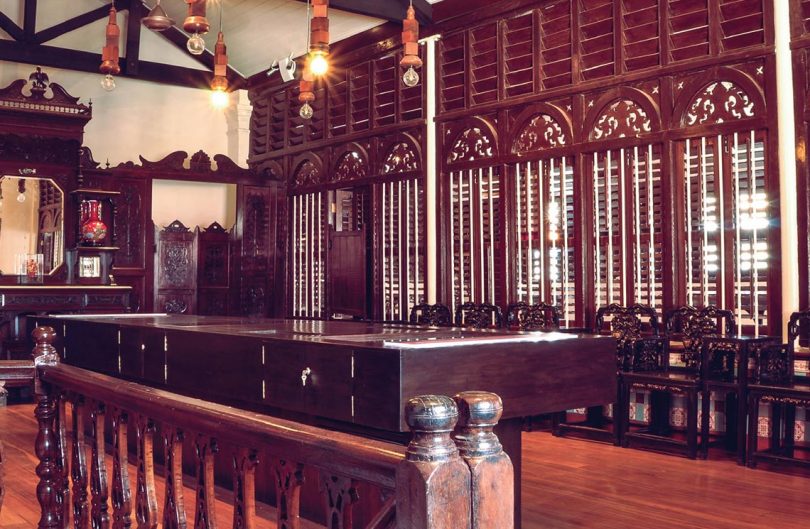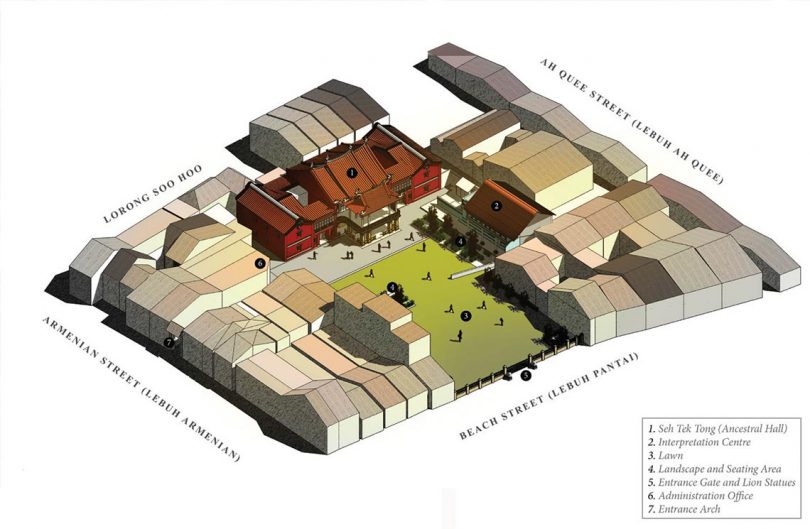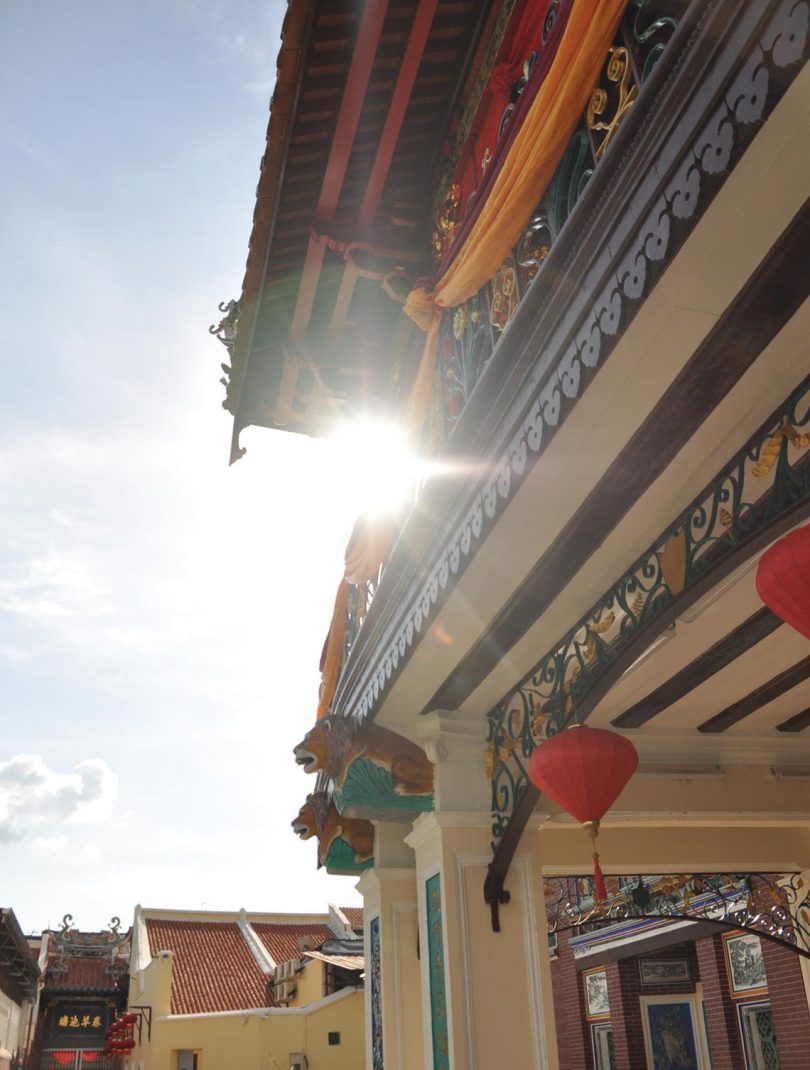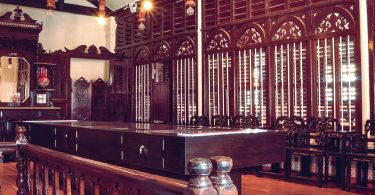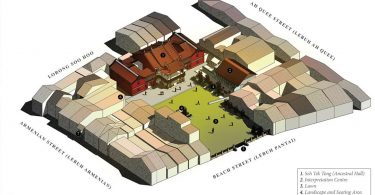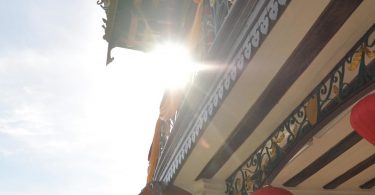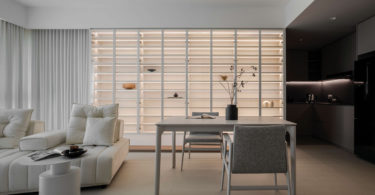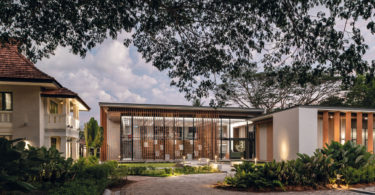The Cheah Kongsi Ancestral Temple in Georgetown is where the 207-year-old Seh Tek Tong Cheah clansmen venerate their ancestors and patron deities. The Cheah clan association, one of the oldest Hokkien kongsi in Penang, was formed in 1810 to look after the welfare of clansmen, from the Sek Tong Seah ancestral village in Fujian, China, who came in search of better fortunes in Malaya.
The temple site was purchased by the clan’s trustees back in 1828. Construction on the temple began in 1858 and was completed in 1873. The main prayer hall is on the upper floor of the two-storey main building, which is flanked on both sides with auxiliary halls and storage chambers.
While the temple has since been renovated several times, the first major restoration works were undertaken from 2013 to end-2015. The RM3.8 million works, helmed by aLM Architects, included the restoration of the temple, the artistic fencing along Beach Street, the ornate entrance arch, the surrounding houses along Armenian Street and the Interpretation Centre. Think City, a subsidiary of Khazanah Nasional, awarded a partial grant, worth RM400,000, to the kongsi as part of its efforts to rehabilitate and promote conservation efforts in George Town.
RESTORING HISTORY
The Cheah Kongsi temple is classified as a Category 1 heritage building in the core zone of George Town World Heritage Site, Penang. As this was a building with high historical, cultural and architectural significance, the restoration works had to be done according to stringent international conservation guidelines.
One of the biggest challenges was to accurately reveal, recover or represent the state of a historic building, as it appeared at a particular period in its history, while protecting its heritage value.
As the clan temple had undergone several renovations, alterations and additions before, some of the building elements may not be historically appropriate. For example, the terracotta roofs were replaced with Chinese imperial yellow glazed tiles around 1985. While the roof was restored with terracotta tiles between 2003 and 2005, the workmanship for the plastering, painting and timber works was poorly done. The right wing’s interiors had also been laid with modern homogeneous floor tiles and ceramic wall tiles in 1995, while the timber windows on both wings’ walls were replaced with ceramic air vents.
The restorers had to study and justify every element of the temple, remove some elements (after documenting them) and then recover the temple to its most accurate historical state.
AUTHETIC ARTISANSHIP
The architectural team chose to maintain the architectural and structural integrity by using original traditional materials and reconstructing the heritage features, such as gold leaf, JianNian (Chinese cut-and-paste shard work) and CaiHui (ancient Chinese architecture painting). Skilled artisans from Fujian were brought in to ensure that authentic traditional techniques were used.
The four main materials normally used in a heritage building are timber, stone, lime and clay. Timber is used for structural beams, piles, carved screens, staircase, terrace structure and the floor. The recycled or new timber used for the restoration had to be matched by size, species and strength.
For the stone repair work, stones are matched carefully to its original material, function and design in the Cheah Kongsi building. Granite is used to repair a sink below the air-well that is used for collecting rainwater and to build a solid base with floor tiles to support a timber staircase. Granite corber stone is inserted into the wall to support the main beams, such as the front façade and air-well. Rubble granite, set in lime mortar, is used as the foundation. Carved corbel is used to decorate the small façade roof.
As an original and environmentally friendly building material, lime is used in several ways in this project. In the walls, there is lime mortar between the bricks, lime plaster covering the bricks, and also lime wash colouring the wall. For the roof, lime plaster is used for the wall, flashing (as a weather-resistant barrier) and under the tiles. Lime concrete is used below the terracotta tiles for the interior flooring.
As Georgetown was built on a swamp, breathable clay brick walls and terracotta floors are used in this project to allow ground moisture inside to cool the rooms. Major repair works had to be done carefully to the damaged walls.
First, the cement and damaged lime plaster were hacked off by hand, while avoiding damage to the clay brick structure. Then the salt content in the wall was tested first before the desalination process, where weak lime plaster is applied to the walls to suck out the damaging salts. This process is repeated before the walls are plastered with lime plaster and a breathable finish.
CONTRIBUTING TO COMMUNITY
The existing administrative building was turned into an Interpretive Centre—one of the first in Malaysia—to showcase more than 500 catalogued documents dating back to the early 1800s, which were found in an old cast iron safe. The Interpretation Centre will also accelerate the efforts of research into the history and culture of Chinese society in Malaysia.
Besides the restoration works, a public landscape garden was also created to function as a Green lung in this part of the city, as well as a place for lawn parties and community activities.
Cheah Kongsi also collaborated with the state government by allowing its wall at Armenian Street to be painted with what is now the most widely photographed ‘children on a bicycle’ mural.
The restoration has further enhanced this World Heritage site, marking a new phase in the history of the Cheah Kongsi and allowing it to continue showcasing its rich heritage in a distinctive and engaging way, while remaining true to its origin.
Location: Lebuh Armenian, George Town, 10200 George Town, Pulau Pinang
Completion Date: December 2015
Site Area: 0.89 acres
Gross Floor Area: 1,410 square metres
Client/Owner: Seh Tek Tong Cheah Kongsi
Architecture Firm: aLM Architects; aLM Heritage
Principal Architect: Ar Mei Chee Seong
Architectural Conservator/ Restoration Architect: Tan Hiap Hong
Project Architect: Ar Ho Chin Keng
Main Contractor: Wensi Heritage Work Sdn Bhd
Images: aLM Architects



